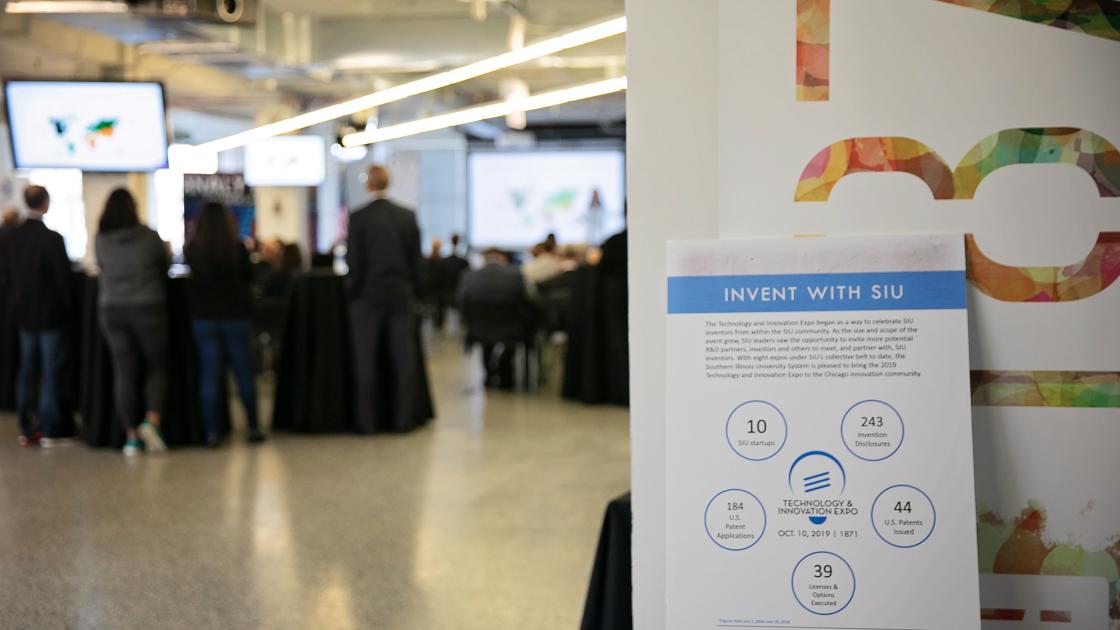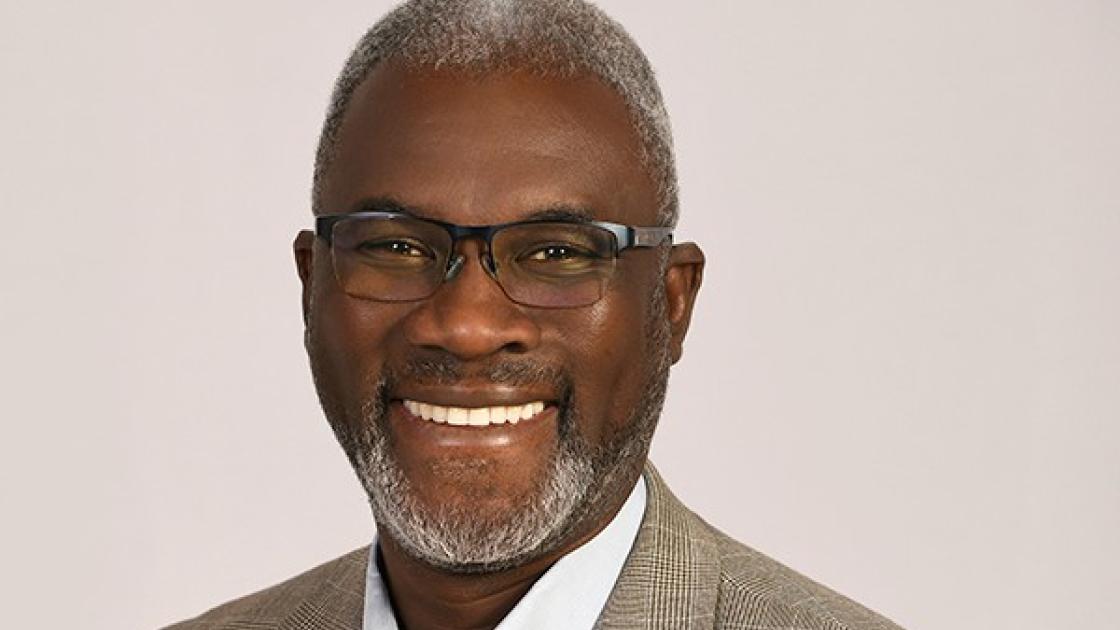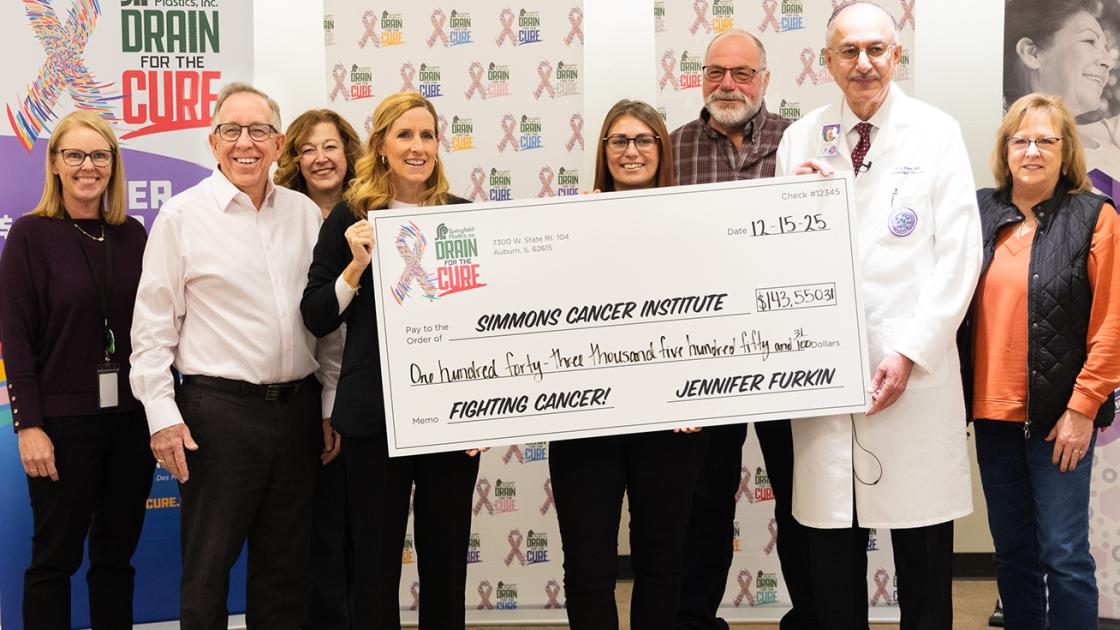
Scientific Research Showcased at Technology, Innovation Expo
Investors and researchers gathered at the Chicago Merchandise Mart on Oct. 10 for a look at how SIU technologies are making an impact on worldwide health and wellness. Presentations at the 2019 SIU System Technology & Innovation Expo were wide-ranging but struck a common, transformative chord: If developed, the resulting therapies and products have the potential to improve the health of vast populations.
 The cannabis panelists, left to right: Aldwin Anterola, PhD, and Dale Buck Hales, PhD, both with SIU-Carbondale; Mitch Meyers, Nature’s Care Company; and Dina Rollman, Green Thumb Industries
The cannabis panelists, left to right: Aldwin Anterola, PhD, and Dale Buck Hales, PhD, both with SIU-Carbondale; Mitch Meyers, Nature’s Care Company; and Dina Rollman, Green Thumb Industries
Among the many topics:
- Boyd Goodson, PhD, chemistry professor and acting associate dean of the College of Science at SIU-Carbondale, has perfected a process called “hyperpolarization” that enhances the sensitivity of MRIs (magnetic resonance imaging). By bubbling a gas through a liquid, his team can increase the equipment’s speed and power 300,000- fold. It would make the procedure more efficient and easier on the patient.
- Debashree Mukherjea, PhD, research assistant professor of surgery at SIU School of Medicine, has helped develop a new drug that provides hearing protection from cisplatin, a commonly prescribed cancer chemotherapy treatment that causes deafness. The therapeutic drug also has recovery properties for noise exposure, so it could also benefit military personnel and become an emergency room staple.
- Jay De Long, director of the Research Interchange for Southern Illinois University and University of Missouri Systems, previewed the new research portal developed by the academic groups to direct assets to solve research challenges and meet the needs of industry partners.
- A diverse panel of experts discussed how cannabis business opportunities may be leveraged as Illinois’ legal landscape changes.
Additionally, two of the day’s presentations are already generating buzz within the medical community.
 Hales talks with Keith Gagnon, PhD, SIU School of Medicine
Hales talks with Keith Gagnon, PhD, SIU School of Medicine
MACHINE LEARNING
Machine learning (ML) is a new programming paradigm that uses code capable of learning by examples rather than rules. When applied to medicine, it can look at large datasets and provide another layer of expertise for screenings and routine imaging diagnoses.
Sara Robinson, a developer advocate for Google, explained how ML applications are programmed to recognize edges or patterns of pixels and learn as they process the information. They then can generate predictions based on the data input. ML medical applications already in use include diabetic retinopathy diagnosis, cancer detection using chest x-rays, and transcribing hand-written physicians’ notes.
“In areas of the world where there may not be enough doctors to treat an increasing incidence of disease, machine learning can be incredibly useful,” Robinson says.
She encouraged the scientists and entrepreneurs to consider adding machine learning to their studies to improve efficiency and accuracy. Google’s AI division has developed software (e.g., TensorFlow, Cloud AutoML and Google Vision API) for research and medical use.
 Debbie Mukherjea, PhD, SIU School of Medicine
Debbie Mukherjea, PhD, SIU School of Medicine
CRISPR SAFEGUARDS
Keith Gagnon, PhD, is an assistant professor in the Department of Biochemistry and Molecular Biology at SIU School of Medicine. His lab’s work was spotlighted in a June issue of the New England Journal of Medicine, for advances in CRISPR gene editing.
Gene therapy has been around since the 1990s, but took a very promising step forward in 2014, with the breakthrough of CRISPR (clustered regularly interspaced short palindromic repeats). CRISPR is an enzyme that can prune DNA within a cell, somewhat like a pair of molecular scissors. The cell then tries to repair the damage by adding or removing sequences. Through this mechanism, scientists can chemically control the process.
“The gene editing tool’s magic is in the guide RNA, which can be programmed to go to any of the thousands of genes in a person’s body,” Gagnon said. “It turns gene therapy into precision medicine.”
With all the promise shown by CRISPR, there is also concern about its side effects. One cut in the wrong gene could potentially trigger a disease like cancer. Gagnon’s lab has characterized the myriad of chemistries involved and established rules for modifications to the guide RNA, offering better guardrails to control the activity and specificity of CRISPR.
The group has also created molecules to act as “kill switches,” inhibitors that satisfy safety mandates and address side effects for specific therapeutic CRISPR applications. These can be fast-tracked into clinics because the FDA has already approved similar therapies.
Gagnon has two patents filed in the U.S. and Canada for the chemically modified CRISPR guide RNAs.



